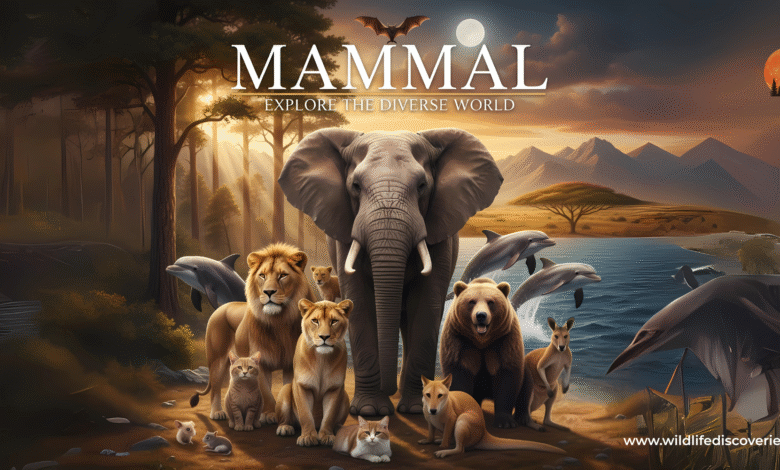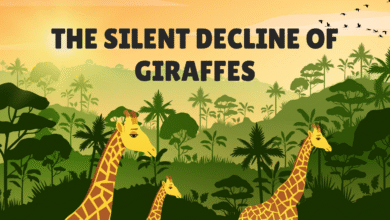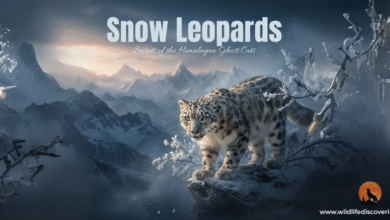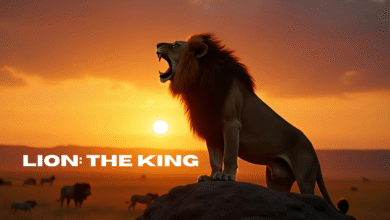What Is a Mammal? Definition, Examples & Easy Facts (2025)

If you’ve ever wondered what is a mammal, this friendly guide is for you. In simple language, we’ll explain the key traits of mammals, how they live, why they matter, and clear up common questions like “are birds mammals.” You’ll also find practical tips, examples, and connections to learning events such as March Mammal Madness 2025.
What makes an animal a mammal?

To answer what is a mammal, remember this easy checklist:
Hair or fur at some stage of life
Mothers make milk to feed their young
Warm-blooded (steady body temperature)
Three tiny middle-ear bones that improve hearing
These four traits are the heart of what is a mammal and help mammals thrive in many habitats, from deserts to oceans.
Core Features of Mammals
Mammals share a clear set of core features that make them stand out. They have hair or fur at some stage of life, which helps with warmth, camouflage, and touch (think whiskers). Mothers make milk to feed their young, a defining trait that supports early growth and immunity. Mammals are warm-blooded, keeping a steady body temperature in both hot and cold places, and most have specialized teeth—incisors, canines, and molars—matched to their diets. Three tiny middle-ear bones sharpen hearing, while a four-chambered heart and a strong diaphragm power efficient breathing and endurance. Add in keen senses, relatively large brains, and strong parental care, and you get adaptable animals that thrive from deserts and mountains to rivers and oceans.
Hair or Fur
Hair keeps a mammal warm, helps with camouflage, and acts as a sensing tool (whiskers). Even marine mammals like whales have hair follicles early in life.
Milk from Mothers (Mammary Glands)
Milk gives baby mammals water, energy, and antibodies. This mother-to-young feeding is central to what is a mammal because only mammals make milk this way.
Warm-Blooded Power (Endothermy)
Warm-blooded mammals make their own heat, staying active in cold mornings and hot afternoons. This is a practical part of what is a mammal—it unlocks life in almost every climate.
Teeth and Jaws
Most mammals have different teeth for different jobs—cutting, tearing, grinding. This variety explains how mammals can be plant-eaters, meat-eaters, insect-eaters, or a mix.
Advanced Brains and Behavior
Many mammals learn, play, solve problems, and live in social groups. This flexible behavior is an important, human-relatable part of what is a mammal.
How Mammals Reproduce
Mammals reproduce through sexual reproduction, where a male’s sperm fertilizes a female’s egg. Most mammals give birth to live young (viviparous), and the embryo develops inside the mother’s body, receiving nourishment through the placenta. After birth, the mother feeds her young with milk produced by her mammary glands. This method of reproduction ensures better protection and care for the offspring, increasing their chances of survival.
Three main groups
Monotremes: lay eggs (platypus, echidnas) but still nurse their young
Marsupials: short pregnancy; babies grow in a pouch (kangaroos, koalas)
Placentals: longer pregnancy with a placenta (humans, elephants, whales)
Parental care
Parents protect, clean, teach, and feed their young. Extended care boosts survival and is a living example of what is a mammal.
Evolution in Brief
Evolution is the process by which living organisms change gradually over generations, giving rise to new species. It occurs mainly through natural selection, where organisms with traits that help them survive and reproduce pass those traits on to their offspring. Over long periods of time, these small changes accumulate, leading to diversity in life forms. Evidence of evolution can be seen in fossils, similarities in body structures, and DNA, all showing that different species share common ancestors.
Where mammals came from
Ancient ancestors appeared over 300 million years ago. After the dinosaur extinction about 66 million years ago, mammals spread into many roles—on land, in water, and even in the air (bats). This deep history explains today’s huge variety and helps us answer what is a mammal with confidence.
Big Groups You’ll Recognize
Living things can be grouped into big categories that are easy to recognize. Mammals have hair or fur and feed their young with milk, like humans and cats. Birds have feathers, wings, and beaks, such as sparrows or penguins. Reptiles are cold-blooded with scaly skin, like snakes and lizards. Amphibians live both in water and on land, starting life as tadpoles, such as frogs. Fish live in water, breathe with gills, and have fins, like goldfish or sharks. These groups make up some of the most familiar parts of the animal kingdom.
Examples
Primates: lemurs, monkeys, apes, humans
Carnivorans: cats, dogs, bears, seals
Hoofed mammals (ungulates): deer, antelope, horses, cattle
Rodents & lagomorphs: mice, squirrels, beavers; rabbits and hares
Bats: the only mammals with true flight
Marine mammals: whales, dolphins, porpoises, manatees
How Mammals Survive
Mammals survive by using a variety of special features and behaviors. Their warm-blooded bodies help them stay active in both hot and cold environments. They have hair or fur to protect against weather and to camouflage from predators. Mammals also show intelligent behavior, using memory, learning, and communication to find food and stay safe. Many live in groups for protection, while others rely on speed, strength, or sharp senses. Mothers care for their young by feeding them milk, giving babies a better chance to grow and survive.
Body temperature control
Fur or blubber keeps heat in; sweating or panting cools the body. Behaviors like basking, burrowing, huddling, and migration help too.
Heart and lungs
A four-chambered heart moves oxygen efficiently. A strong diaphragm helps mammals breathe deeply—great for endurance and active lives.
Senses and communication
Many mammals rely on smell and hearing. Bats use echolocation; whales use complex sounds; elephants communicate with low rumbles. These abilities make what is a mammal feel wonderfully three-dimensional.
Habitats and Diets
Mammals live in a wide range of habitats, from forests, grasslands, and deserts to oceans and icy polar regions. They adapt to their surroundings with features like thick fur in cold areas, streamlined bodies for swimming, or strong legs for running. Their diets also vary: some are herbivores that eat plants (like deer and elephants), others are carnivores that hunt animals (like lions and tigers), and many are omnivores that eat both plants and animals (like humans and bears). This variety in habitats and diets helps mammals survive almost everywhere on Earth.
Where they live
Mammals occupy forests, grasslands, deserts, mountains, tundra, rivers, and oceans—even cities and farms.
What they eat
Herbivores: eat plants (deer, antelope, elephants)
Carnivores: eat animals (tigers, wolves)
Omnivores: eat both (bears, pigs, humans)
Insectivores: mainly eat insects (shrews, hedgehogs, many bats)
Diet shapes teeth, behavior, and the mammal’s role in its ecosystem—another clear way to explain what is a mammal.
Why Mammals Matter
Mammals matter because they play important roles in keeping ecosystems balanced and healthy. Many help control insect and plant populations, while others spread seeds or pollinate flowers, supporting new plant growth. They are also a vital part of the food chain, serving as both predators and prey. For humans, mammals provide companionship, food, clothing, and even medical research that saves lives. By caring for their young and showing complex behaviors, mammals also give us insight into social bonds and intelligence in nature.
Roles in nature
Mammals spread seeds, pollinate flowers (some bats), and recycle nutrients. Healthy mammal populations usually signal a healthy ecosystem.
Benefits to people
They support forests, farms, and fisheries, control pests, and attract eco-tourism. Protecting mammals often protects clean water, fertile soil, and vibrant local economies.
Threats and Protection
Mammals face many threats, including habitat loss from deforestation, pollution, climate change, hunting, and illegal wildlife trade. These dangers reduce their numbers and put many species at risk of extinction. To help, people around the world work on protection measures such as creating wildlife reserves, enforcing hunting laws, rescuing endangered species, and restoring natural habitats. Protecting mammals not only saves these animals but also keeps ecosystems healthy for all living things, including humans.
Main pressures
Habitat loss and fragmentation, climate change, invasive species, disease, and overhunting or illegal trade.
What works
Protect and connect habitats with wildlife corridors
Support community-based conservation and responsible tourism
Reduce pollution and plastic waste
Strengthen anti-poaching efforts and fair enforcement
Common Questions (FAQ)
Are birds mammals?
No. Birds are not mammals. Birds have feathers, lay hard-shelled eggs, and do not make milk with mammary glands. This quick test helps separate birds from what is a mammal.
Do all mammals give live birth?
Almost all do, but monotremes (platypus, echidnas) are the exception—they lay eggs and still count as mammals because they have hair and produce milk.
Are whales and dolphins really mammals?
Yes. They breathe air, nurse their calves with milk, keep a stable body temperature, and have hair at least as embryos. They are marine mammals.
Are bats birds because they fly?
No. Bats are mammals. Their wings are hands with very long fingers and a thin skin membrane.
How many species are there?
Over 6,000 mammal species are recognized today, with new ones described regularly.
Four Short, Real-World Examples
Asian elephant: family and memory
Elephants live in tight families led by experienced females. Calves learn routes to water, food plants, and social rules. This caring behavior shows a very human side of what is a mammal.
Little brown bat: nighttime pest control
A single small bat can eat hundreds of insects in an hour. Bats use echolocation to find prey and help farms by reducing pests—an everyday win from mammals.
Tiger: apex predator and forest guardian
Tigers need large, connected habitats and healthy prey. Where tigers do well, forests tend to be healthier too—a powerful lesson in why mammals matter.
Platypus: the monotreme marvel
With a duck-like bill and egg-laying lifestyle, the platypus proves that what is a mammal covers a wide, surprising family.
People and Wildlife: Coexisting Better
Practical tips
Store food and rubbish securely
Use better livestock enclosures and guard animals where suitable
Drive carefully in wildlife areas; support wildlife crossings
Teach kids and visitors to watch from a distance—never feed wildlife
Coexistence begins with respect. Treat mammals as neighbors—sometimes tricky ones—and long-term solutions follow.
Learning Through Play
March Mammal Madness 2025
This popular, education-focused bracket event brings science and storytelling together. It’s a fun way to explore behavior, habitats, and strategies—turning the question what is a mammal into an exciting journey for classes, families, and nature clubs.
Field Guide Basics
How to spot mammals near you
Look for tracks, droppings, and nibbled plants
Watch at dawn and dusk when many mammals are active
Visit water sources where animals gather
Use binoculars; keep a respectful distance; never bait wildlife
Summary: The Mammal Checklist
Quick recap
Hair or fur ✔
Mothers make milk ✔
Warm-blooded body ✔
Three middle-ear bones ✔
Flexible behavior and varied teeth ✔
With these traits in mind, you can answer what is a mammal clearly and confidently—and help others appreciate the incredible mammals we share the planet with.
Our Blogs | Wildlife Discoveries
At Wildlife Discoveries, we share engaging blogs that explore the wonders of the animal kingdom and the natural world around us. From learning how mammals reproduce and survive, to understanding evolution, habitats, and diets, our blogs are designed to make wildlife knowledge simple and enjoyable. Each post brings you closer to nature by highlighting why animals matter, the threats they face, and the ways we can protect them. Dive in and discover fascinating facts while exploring the beauty and importance of wildlife.



